Blue tongue skinks do not usually suffer from many health issues. Thus they require less attention and care.
So if this is the case, why should you worry then or be concerned about their health?
The above statement is not to say that blue tongue skinks cannot become sick due to disease or illness. In fact, this article will expose you to several common blue tongue skink diseases, illnesses, and health concerns.
The idea is to give you knowledge of these diseases and illnesses. Your ability to identify each disease is vital.
The reason is that many breeders have reported that captive blue tongue skinks are good at hiding symptoms of a disease or illness. So don’t be taken aback if you didn’t notice illness in your skink quite early enough.
“That’s why this article is a must-read for you“
Secondly, where your blue tongue skink was gotten from is what you should be concerned about because this has a role to play in your skink’s health.
If your blue tongue skink is wild-caught, then you should be concerned about its health.
The reason behind this is quite simple. Wild-caught blue tongue skinks carry many parasites and germs that can create a health hazard not only to the skink but to your family as a whole.
Let’s just say your health wasn’t affected; you will still have to spend a huge sum to get them dewormed and disinfected.
Before delving into the common diseases, illnesses, and health concerns, let’s briefly establish the difference between these terms.
This article has been reviewed by Dr. Dilber. Read more about our knowledge control process here.
Contents
Blue Tongue Skink Diseases, Illness, And Health Concerns – What Are The Differences?
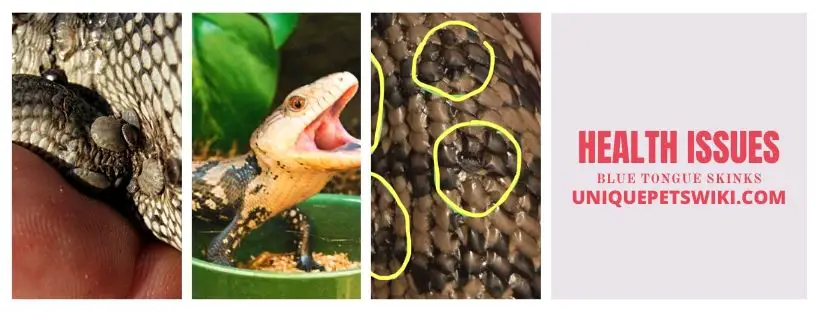
This part is vital because it’s very easy to mistake one for another since their meanings can overlap.
Knowing the distinctions will help you know the severity of each condition and how concerned you should be, as well as what action you should take.
What Are Diseases?
Going by medical definition, a disease is an abnormal condition in which an underlying, diagnosable problem affects a part or all of an organism.
Diseases are the specific root cause of an illness and health concern. They’re in essence, the reason behind abnormalities, dysfunctions, and discomforts.
Simply put, diseases are different from an injury.
Many diseases are potentially curable provided they are detected early enough and you give medication, whereas others are not.
The bottom line is, for your blue tongue skinks, the swiftness in which a disease is diagnosed and treated goes a long way in determining whether or not the skink can and will survive.
What Are illnesses?
What then are illnesses? An illness is defined as the physical manifestation of symptoms of an underlying disease that temporarily exists due to something less serious.
So should you be worried? Definitely! A sign of sickness in your skinks is an instance of a disease or poor health, and you should be concerned.
A typical example of illness for humans would be fever, common cold, or upset stomach.
Finally, what are “health concerns?” In this article, health concerns will be used to refer to any physical abnormalities in behavior and appearance that may or may not initially have a known explanation or raise much concern.
In humans, for example, a health concern could be loss of weight, loss of appetite, random skin blisters, abnormal hair loss, or unusual sleeping patterns.
What Are Health Concerns?
Health concerns are something to worry about to find out the underlying cause so as to rescue your skink before things get worse. However, be careful not to make mistakes in diagnosis.
Therefore, early detection, treatment, and prevention is better than treatment.
Common Blue Tongue Skink Diseases
1.) Intestinal Parasite
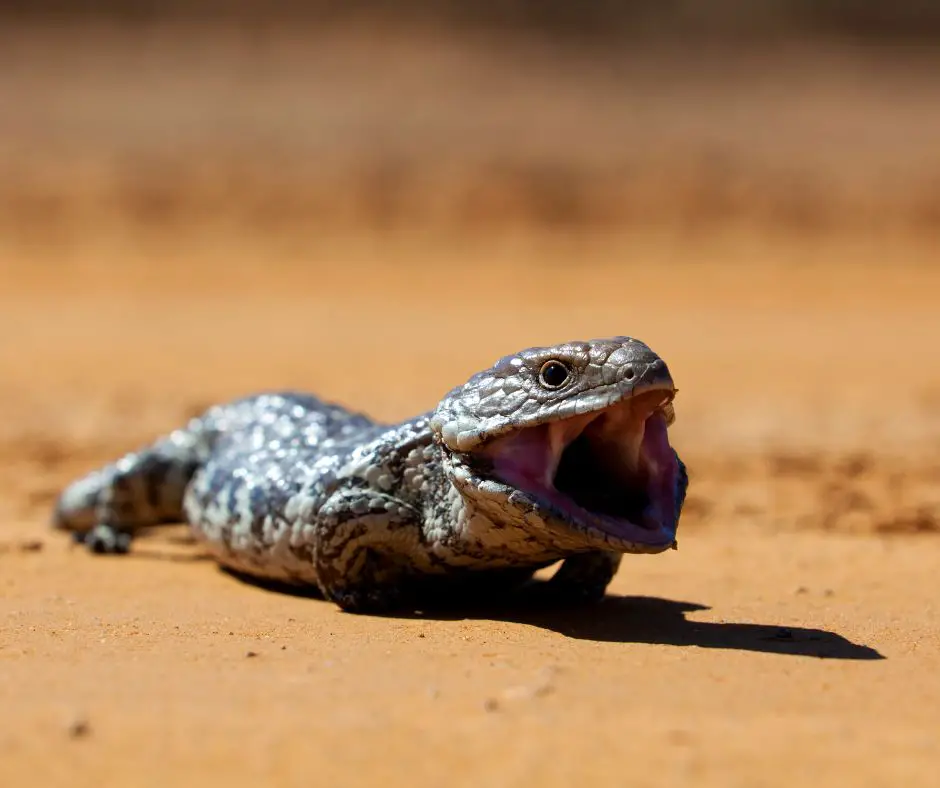
One thing to know about parasites is that they live and feed on their host.
How does this become a health issue for your skink?
If your skink is riddled with parasites, that means it’s going to be robbed of nutrients and blood that it needs for survival. Once your skink’s immune system is too weak to tackle the parasites, it will lead to illness.
Wild-caught blue tongue skinks come with many parasites compared to captive-bred skinks. Yet that’s not something to worry about as wild blue tongue skinks have a strong immune system capable of keeping off parasites.
The problem is, the immune system of a blue tongue skink will get compromised during capture and transportation stress. As a result, they cannot fight disease-causing germs.
This happens to be the case with most captive-bred skinks.
What are the signs of intestinal parasites?
Intestinal parasites of blue tongue skinks use the essential nutrients from the intestine and blood. As a result, the skink suffers from a deficiency of different vitamins, minerals, and nutrients. Internal parasites may also cause internal bleeding, diarrhea, and ulcers.
- Low body fat
- Weight loss
- Loss of appetite
- Lethargy
- Diarrhea
- Absence of stool or extremely smelly stool.
Treatment and preventive measures
Anti-parasitic drugs can be used to treat parasitic infections. However, stool test is necessary to determine the type of parasite.
The sample stool must be fresh for accurate results. Preferably 24 hours old.
Bear in mind that earlier detection of a deadly disease is key to keeping it under check. If your vet detects parasites to be present in your skink, your skink will be given some oral dewormer treatment.
During treatment of parasitic attacks, you can administer some probiotics to your skinks. This will help reduce the effects of deworming medication that was administered and promote a good appetite.
Finally, to prevent recontamination of parasites in your skinks, make sure their enclosures are always kept clean.
Embark on a quarterly cleanup routine of every 3-months and thoroughly clean every surface with a pet disinfectant.
2.) Metabolic Bone Disease (MBD)
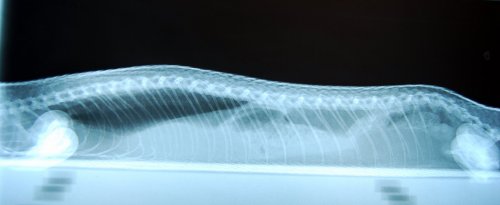
This is one of the most common diseases in reptiles, especially, captive-bred reptiles. Metabolic Bone Disease occurs when a reptile cannot absorb calcium properly or isn’t receiving enough calcium from its diet.
This disease, if not detected early or left untreated can be life-threatening to your skinks.
It is very important to note that MBD is not just one disease but a general name given to a collection of bone-related diseases or disorders. Such diseases that affect the bone are:
- The most common Nutritional Secondary Hyperparathyroidism (NSHP)
- Osteopetrosis Renal Secondary Hyperparathyroidism (RSHP)
- Hypertrophic Osteopathy (HO)
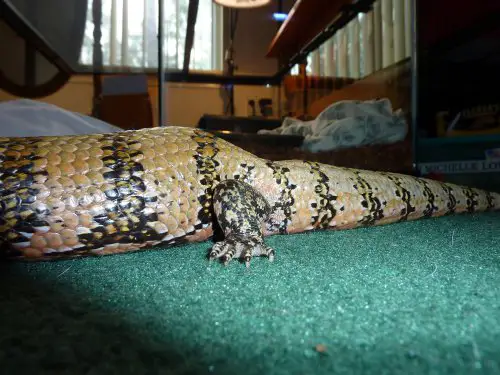
What are the signs and symptoms?
- Loss of coordination
- Curved limbs
- Swollen limbs
- Soft jaw
- Muscle spasms
- Lethargy
Causes
- Insufficient calcium in the diet
- Insufficient vitamin D in the diet
- High concentration of phosphorus in the diet.
- Intestinal ulcers and inflammation
- Imbalanced nutrition
- Insufficient UVB
Treatment/Preventive Measures
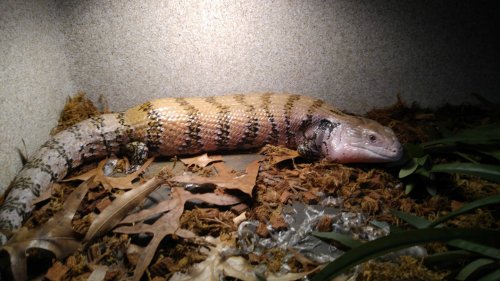
Metabolic Bone Disease is not a disease you can treat on your own at home. If you notice any of the aforementioned signs and symptoms, consult an experienced reptile vet first.
Once the damage is done to your skink as a result of Metabolic Bone Disease or wrong treatment, it can’t be reversed.
But earlier detection and treatment with the right medication can cure MBD.
Although blue tongue skinks naturally can go without UVB especially tropical Indonesian skinks, a skink diagnosed with MBD will need to be exposed to appropriate UVB levels for full and quick recovery.
For an enclosure that is 18 to 24 inches tall, a strong and high-quality 24 inch UVB bulb is required. We recommend products from Zoo Med and Arcadia Desert.
As part of recovery and preventive measures, supplement their diet with pure calcium powder fortified with vitamin D3 to help restore their vitamin D reserves.
Finally, adhere strictly to the prescription and advice of your pet’s vet.
3.) Respiratory Infection
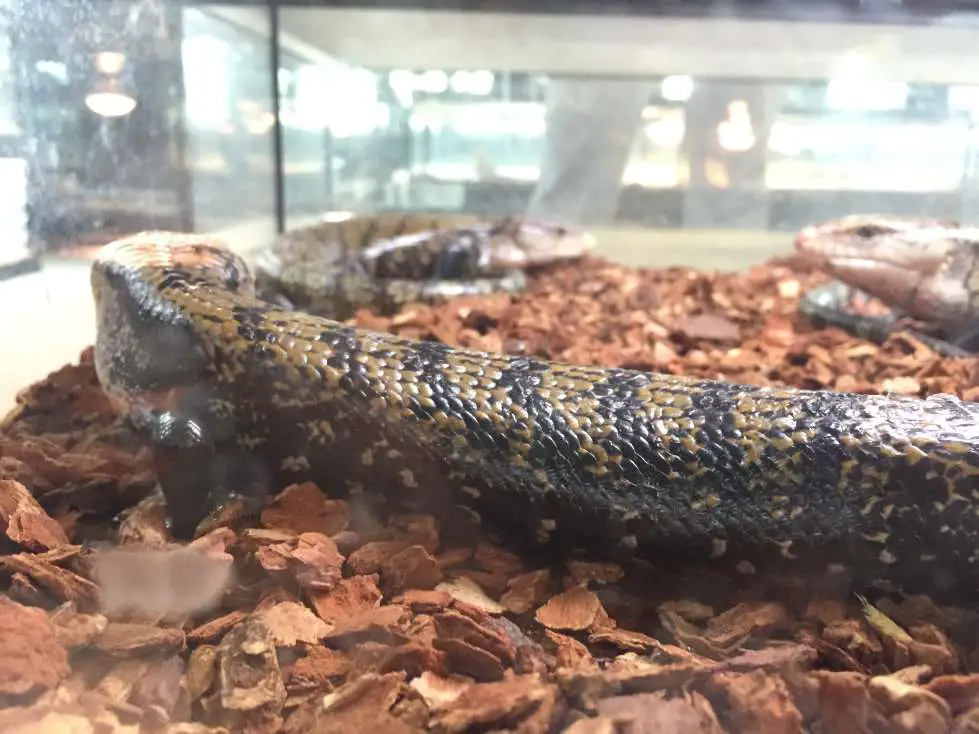
This is also called Upper Respiratory Infection (URI).
Causes
The presence of dust in the cage also causes irritation and infection of the respiratory tract. Because dust contains too many bacteria which can proliferate in the respiratory tract and cause infection.
Other causes includes:
- Extreme humidity (either too low or too high).
- Low temperature
- No thermal gradients in enclosures to keep tabs on temperatures.
- Prolonged stress
Signs/Symptoms
- Runny nose
- Swollen and bloated body
- Breathing with open mouth
- Gasping for air.
- Lethargy
- Scabbed lips
- Weepy eyes
- Weight loss
- Loss of appetite
- Slimy mucus-like discharge from the mouth and nose.
- Audible exhalation.
- Extended head breathing
- shaking head while breathing
- Purulent exudate in the nasal cavity
Treatment
If you suspect your skink has respiratory infection via the symptoms mentioned above, consult a certified veterinarian for proper diagnosis and treatment.
New to blue tongue skink? Check out the blue tongue skink care sheet now! We had listed out all the things you need to know about blue tongue skinks as pets. Check it now!
Besides, as part of preventive measures, increase the nighttime temperatures to 80 to 85 degrees Fahrenheit. This will help the administered antibiotics to work more effectively.
Finally, administer probiotics alongside antibiotics to your skink to help reduce the negative effects of antibiotics.
4.) Spine Deformity
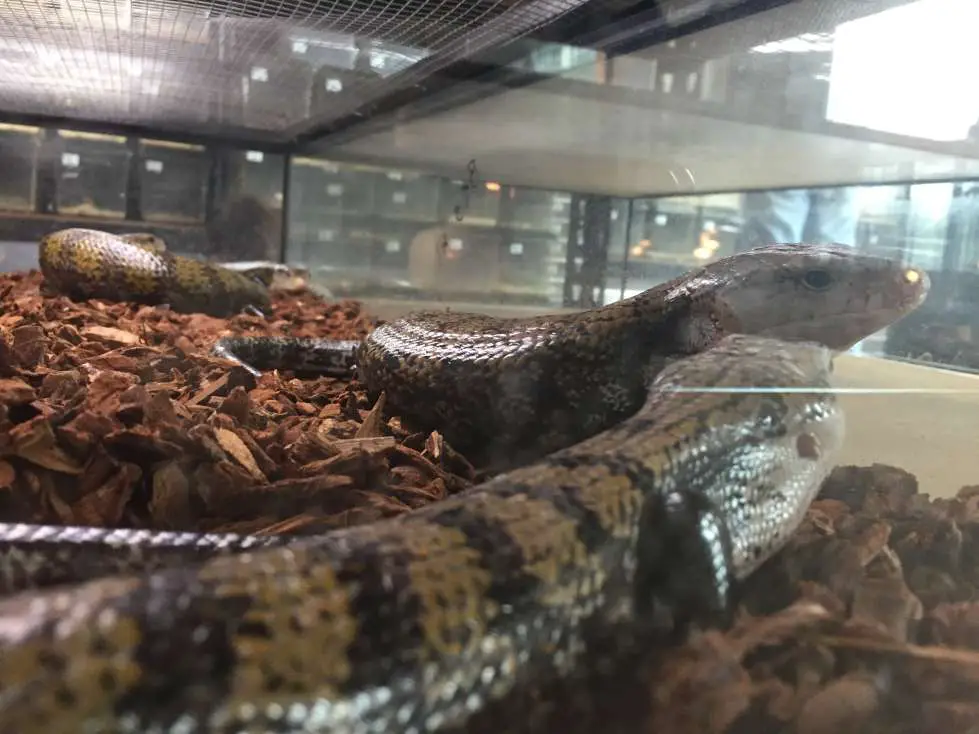
This is another disease common to reptiles, including blue tongue skinks. This is a disease that affects the bone caused by Metabolic Bone Disease.
Causes
- Malnutrition
- Metabolic Bone Disease
- Too small enclosure
- Not enough environmental enrichments for exercise
- It can be genetic or due to a deficiency of vitamin B12.
Symptoms
- Hunchbacked appearance
- Able to fold body into half backward
- Flattened midsection
- Unusual spinal dip between front and back legs
- Able to twist into a corkscrew shape.
- Limited growth
- Restricted head movement
Treatment
Transfer your skink to a much bigger and wider enclosure with enough floor space. Provide more enrichments that will give your skink a Zoo-quality habitat.
Depending on the severity of the deformity, your skinks’ internal organs will be rearranged to synchronize with the spine’s current unusual position. This may reduce the size of the stomach. At this point, you’ll need to feed your skinks a small amount of food.
5.) Scale Rot
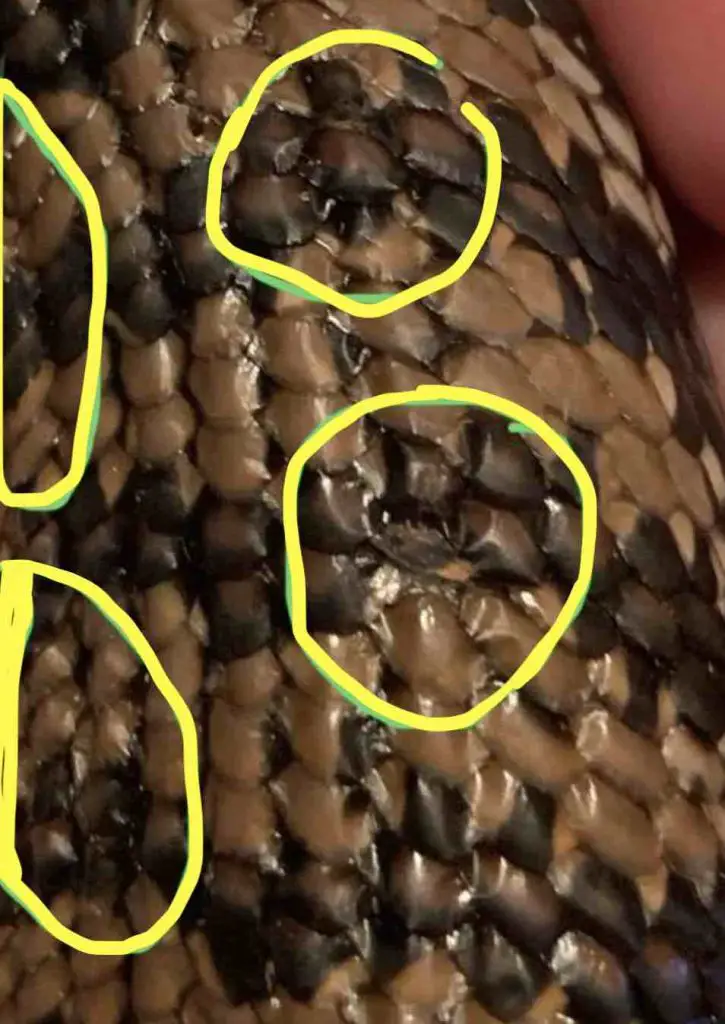
This disease is also called Ulcerative/Necrotic Dermatitis. It’s simply an inflammation of the skin.
Causes
- Wet substrates
- Bacterial infection
- Contamination of wounds
- Improper habitat
- deficiency of vitamin A
- Unsanitary conditions
Symptoms
- Blisters
- Open lesions
- Loss of scales
- Flaky skin
- Unusual brown scales
- Bacterial abscesses and ulcers are other typical symptoms of scale rot.
Treatment
Remember that early detection is key to reducing the risk of losing your skink to a deadly disease. One of the first things to do is to consult your pet vet.
The skink should be quarantined during this time. Sterilize the entire enclosure with chlorhexidine or any other pet disinfectant and make sure the entire enclosure is kept clean.
Common Blue Tongue Skink Illness
1.) Obesity
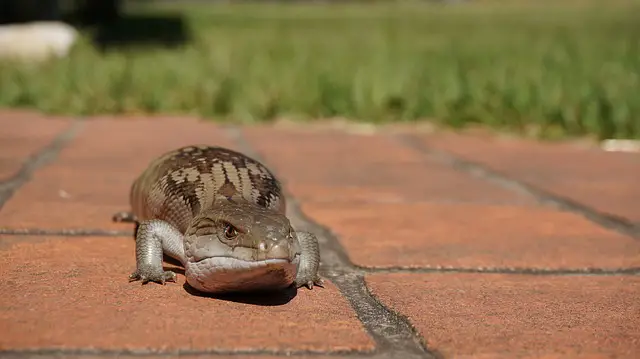
Obesity is a common illness in skinks. Since they are omnivorous and can adapt to virtually any kind of food that is offered, they tend to overfeed and gain too much weight.
Check our article for details on the average size and weight of blue tongue skinks.
Causes
- Too many foods that are rich in fat
- Not enough vegetables in the diet
- Small enclosures that don’t give room for exercises
- Low temperatures
- Feeding too often
Symptoms
- Reduced activity and laziness
- Legs appear rather too small for the body
- Heavy breathing
- Lots of excess flesh under the chin
- Head appears too small for the body
Treatment
One of the first things to do is to evaluate how much you feed your skinks. If it’s too much, then you need to reduce it.
On average adult, skinks should be fed once with a one-day interval, though baby skinks and juveniles will need food almost every day:
- Reduce the fat concentration in the diet
- Add more vegetables to the diet
- Do not feed every day
- Give free access to water.
Make sure you provide large enclosures wide enough to encourage exercises and some accessories for climbing activities.
Weigh your skinks weekly and keep weekly records of their weight. This will help you keep tabs on the health of your skink.
Make sure your skinks’ enclosure temperatures aren’t too low in order to aid easy digestion of food.
Moreover, if all these things are put in place and your skink hasn’t lost weight after a month, consult an experienced vet. There may be a serious problem.
2.) Retained Shed
Medically, a stuck shed is referred to as dysecdysis. It is a problem caused when the outer layer of the skink’s skin fails to shed properly.
This usually happens around the tail. You’ll likely notice a dead and dull appearance of the skin around the affected region.
If undetected and untreated on time, due to lack of blood flow it will lead to something serious.
Cause
- Low humidity
- dysecdysis is also referred to as a genetic problem.
Symptoms
- Shed scales not easily coming off the Skink’s body.
- Skin dryness
- Presence of dead cells on the skin.
Treatment
Since humidity is a major cause, check for the humidity levels in the enclosure and make sure that it’s on appropriate levels.
If you should need to increase the humidity level, the type of substrate you’re using must be taken into consideration.
You’ll need substrates with high humidity retentiveness. The Halmahera blue tongue skinks require high humidity, so if they are having this illness, they would definitely need even higher humidity levels.
3.) Mouth Rot
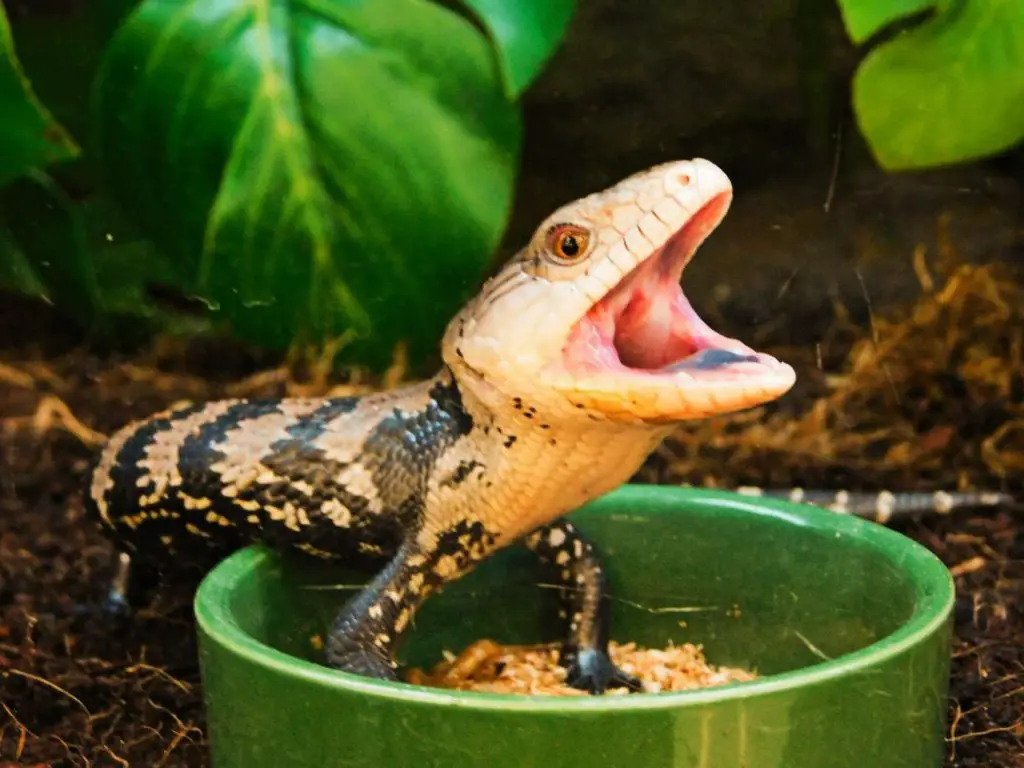
This illness is medically referred to as Infectious Stomatitis. Mouth Rot occurs when the inside of your blue tongue skink’s mouth becomes inflamed to the point of tissues rotting.
It is the physical manifestation or signs of an underlying bacterial, fungal, or viral infection.
This disease is one of the very painful illnesses causing the swelling of the mouth and redness of the gums. Mouth rot reduces the general appetite of your skink and can result in serious deterioration of your skink’s health if not treated properly and on time.
Causes
- Low immune system
- Inadequate cage temperature and humidity levels.
- Poor diet.
- Stress.
- Unsanitary conditions and contaminated dry substrate
Symptoms
Blue tongue skinks affected with mouth rot will typically display some or all of the following symptoms:
- Excessive saliva or discharge from the mouth
- Inflamed or red oral tissues
- Decreased appetite or loss of interest in food
- Yellowish or grayish areas of skin around the mouth
- Dead tissue in or around the mouth
- Swelling of the head (common in severe cases)
Treatment
Mouth rot in blue tongue skinks is not something to be taken lightly, because if left to run its course, the infection can spread to other parts of your skink’s body.
It’s pretty easy to detect and tackle mouth rot early if you make it a routine to monitor the mouth of your blue tongue skink.
Early diagnosis can make a huge difference between a speedy and low-cost recovery, or a long, drawn-out, and expensive treatment.
If you suspect your skink to have mouth rot, you’ll need to consult a vet for proper examination and administration of medication which will include flushing your skink’s mouth with disinfectant, injection, or antibiotics.
Common Blue Tongue Skink Health Concerns
1.) Brumation
The brumation for reptiles means hibernation. Brumation takes place around winter or fall and it lasts about 3 to 4 months.
In the wild, brumation is very essential. It helps the reptiles to survive the cold winter when heat and food become scarce.
Since we have two major regions from where blue tongue skinks are caught (both temperate and tropical regions), some species (temperate species) normally go on annual brumation while others (tropical species) do not.
Temperate species that normally brumate are Australian blue tongue skinks to include: Blotched, Eastern, Centralian, Western and Shingleback skinks.
Tropical species that normally don’t bromate are the Halmahera, Merauke, Classic Indonesian, Irian Jaya, and Tanimbar species of Indonesian skinks.
Temperate blue tongue skinks should be allowed or encouraged to brumate annually. As this is part of their long-term health. For temperate species of skinks, brumation should take between 4-6 months for optimal result.
While many breeders are divided over the fact that skinks under 1-year-old should not brumate, note that blue tongue skinks as young as 7 months old may attempt to brumate.
If this is the case with your skinks, do not try to stop them. Only make sure they are well prepared to survive the process.
This may mean taking your skink to a vet for a general examination and checkup for parasites. If they are medically diagnosed with a disease or illness, allow them to brumate.
On the contrary, never force your tropical blue tongue skinks to hibernate. However, they may want to brumate naturally as their instinctive reaction to your local weather. Their brumation period usually lasts one to four months.
Preparing Your Blue Tongue Skink For Brumation
There are some signs that will be exhibited by your skinks to notify you that they are about to brumate. These signs include:
- Reduced appetite (sometimes they may stop eating completely)
- Hiding a lot
- Not basking
- Grumpiness
Ideally, brumation should start in late Autumn and extend to winter and early spring.
i.) Stop Feeding: The first thing you should do as a breeder when your skinks want to brumate is to stop feeding them for two weeks and later on turn off the heat.
The key reason for this is that reptiles can’t digest food without heat. So when you stop feeding them for some time before turning off the lights, you would have given them the time to empty themselves in preparation to brumate.
If this isn’t done, the food will rot inside their digestive tracts as they go on hibernation.
ii.) Reduce daylight supply from 12 hours per day to 6 hours per day after the first 1-2 weeks of no feeding. This will help notify the skinks of a change in season and also help them feel sleepy.
iii.) Turn off the heat: After the two weeks emptying period, reduce the basking temperature.
This is the final step that will send your skinks to the restorative sleep of brumation.
For tropical species temperatures of about 80 degrees Fahrenheit is ideal. While for temperate species, the heat can be completely turned off leaving only the heatless UVB or LED bulbs on to continue simulating day and night.
What Should You Do During Brumation?
During this period, your blue tongue skinks will sleep almost all the time without wanting to eat or drink anything. Seldomly will you see them come out of hiding, walk around for a while and then go back to sleep.
It is not unusual for skinks to disappear for weeks or even appear dead while on brumation. Obviously, it’s weird, but it’s nothing to worry about. Here is what you can and should do:
- Do not offer them food at all. Remember they shouldn’t brumate with food in their system.
- Refill their water bowl with fresh water once every week in case they need to drink when you are not around.
- If possible during the time they come out to walk around, weigh them once every two weeks to be sure that they haven’t lost too much weight.
However, it is unusual for skinks to lose weight during brumation. So if this happens then you should be concerned.
During brumation, a significant weight loss of 10% is considered too much. You may need to consult your veterinarian.
Waking up your skink
Should they be woken up if they sleep too long?
Usually, blue tongue skinks will wake up on their own and continue with their normal eating and basking activities.
For temperate blue tongue skinks, once this time comes, repeat the steps you took at the start of brumation, but in the reverse:
- First, increase the daylight supply back to 12 hours per day.
- After doing this for about a week, turn on the basking spot.
- When they are fully awoken and start drinking water and basking on their own, you can turn on the heat and offer food as well.
For tropical species, once the brumation period is over, return all temperatures (both basking temperature and cooling temperature) to normal and start offering food.
Also note that after brumation, interest in food for a couple of weeks may not be there. At this point do not force foods to your skinks.
However, if your skink doesn’t wake up fully on its own to resume normal activities after the heat has been turned on for up to one week, or has refused to eat for up to a month; consult your vet.
2.) Mites
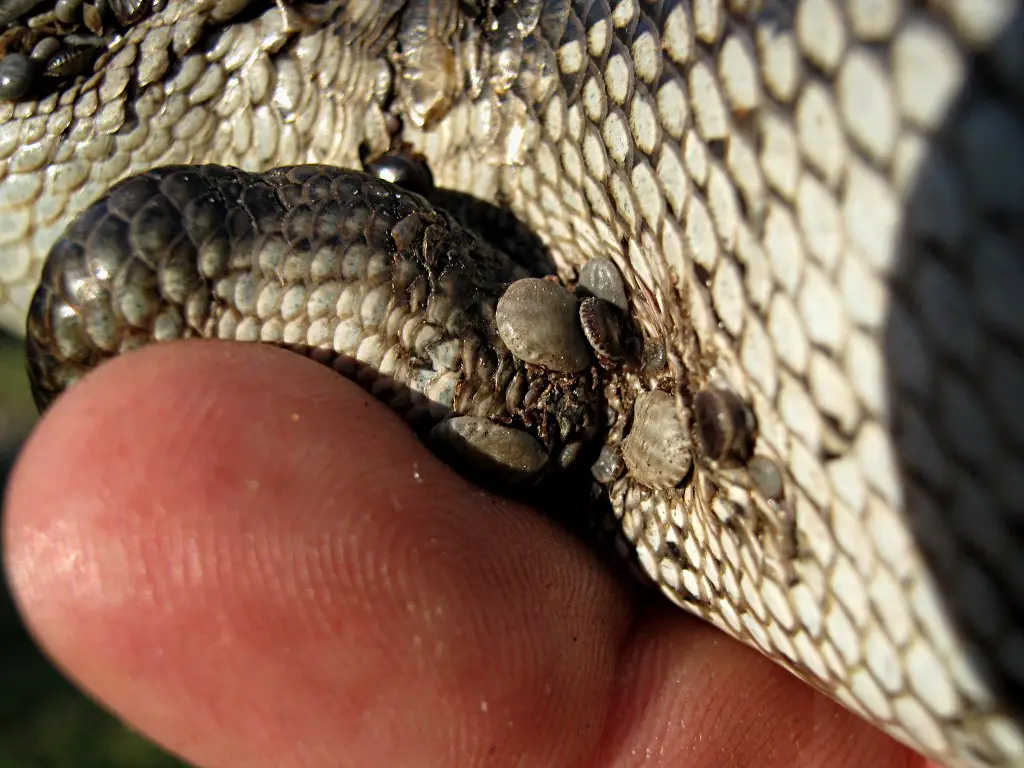
Mites that affect reptiles are quite different from soil and wood mites. Reptile mites are tiny black parasites that live and survive by sucking the blood of reptiles that are its host.
The best way to prevent mites Is by washing your hands thoroughly before and after handling your blue tongue skinks.
Also go further to disinfect any enclosure accessories or items you purchased secondhand with pet disinfectants.
Causes
- Poor hygiene
- Contamination from an infected skink or reptile
Symptoms
- Blue tongue skink become anemic due to overload of mites.
- weakness
- Suppressed immunity
- Lethargy.
- Loss of appetite.
- Rubbing.
- Prolonged soaking.
- Tiny black dots around eyes, ears, and cloaca.
- Tiny black dots visibly moving on the skink and enclosure walls.
- Ash-like dust (mites stool) on scales.
- Tiny black dots on your hands after handling.
Treatment
There are a couple of do-it-yourself (DIY) home remedies you can use to get rid of mites from your skinks such as chemicals that humans use to get rid of head lice.
If your skink is relatively small or very young or visibly ill, then, discuss treatment options with your vet before administering.
Furthermore, new reptiles should be quarantined for about 2-3 months in separate rooms from where the infected skinks are kept.
If such distance isn’t possible because of limited space, make do with separate enclosures.
It is best to take preventive measures to prevent the attack of parasites. Limit the handling of blue tongue skinks and also prevent the entry of vectors that can transfer parasites. Regularly disinfect the cage and surrounding areas.
3.) Nail Trimming
Are you wondering why you should be concerned about their claws? The answer isn’t far-fetched.
Wild-caught blue tongue skinks naturally have low and moderate claws because of their habitats.
For captive breed blue tongue skinks, if their nails aren’t trimmed from time to time, they may injure themselves with it.
Another thing that can help captive breed skinks to naturally keep low claws is the type of substrate you use.
If the substrates you provide for your skinks are rough tiles, packed sand, or flagstone, their nails will naturally wear down and you may not need to trim.
But if the substrates you are using are made of something soft such as aspen shavings, newspapers, reptile carpet, paper towels, etc. their nails will need manual trimming.
What You Need To Start With
Depending on the size and age of your skink, you’ll need any of the following:
Human nail clippers or cuticle clippers or cat nail clippers or dog nail clippers or sanding bits for Dremel tools.
Does the cutting process hurt?
Of course! Reptiles, just like humans, feel pain. Their claws have nerves and blood vessels that are pathways into each nail. So if you cut too close to the nerve, that would definitely hurt.
What should you do?
We suggest that before you start trimming your skink’s nails, cover them with a soft cloth to encourage them to sleep and feel relaxed while you do the trimming.
New to blue tongue skink? Check out the blue tongue skink care sheet now! We had listed out all the things you need to know about blue tongue skinks as pets. Check it now!
How Does A Good Diet Affect Blue Tongue Skinks’ Health?
Undoubtedly, most of the illness and health concerns of blue tongue skinks are caused mostly by poor diet. This is to point you to the fact that good diets play a vital role in the good health of your skinks.
A good diet enhances the immune system and promotes the skin health of blue tongue skinks. Food rich in vitamins plays an important role in renewing the epithelial and mucosal cells.
In the wild, since they are omnivorous they eat plants, fruits, vegetables, berries, blossoms, bugs, and dead animals.
As captive pets, they can be given a variety of foods, such as live bugs, meat, greens, dog or cat food, fruits, plants, and vegetables.
How much and how often you should feed your skinks should be fed is based on their age. Baby skinks and juveniles need more food than adult skinks. Read up on this in our article here.
Part of a good dieting routine that’ll affect your skink’s health either negatively or positively is the time you offer it food. If you give your skink food at the wrong time, this alone can pose a serious health problem to your skink.
What is the appropriate time for feeding?
As blue tongue skinks have slow digestive systems, the best time to give your skink food is 1-2 hours after it wakes up. This will help the food digest properly before it goes back to sleep.
In conclusion, for a good healthy-looking skink, maintain the appropriate diet ratio of 50% vegetables, 40% animal protein, and 10% fruits or plants.
Avoid goitrogenic foods and some other toxic foods. Goitrogenic foods are rich in goitrogens.
The effect of this is that it’ll bind iodine and remove it from your blue tongue skink’s body. In the long run, this can result in thyroid issues.
Conclusion
We can’t over-stress the importance of keeping an eye on your skinks for any of these diseases, illnesses, and health concerns. The fact is, early detection plays a significant role in saving your skink from living a painful life or dying.
The list of diseases, illnesses, and health concerns contained in this article does not mean that these are the only diseases or illnesses you’ll notice.
Your skinks may exhibit symptoms outside the ones mentioned above. Whatever is the case, it’s advisable to consult your veterinarian before taking action so as not to complicate issues for your skink.
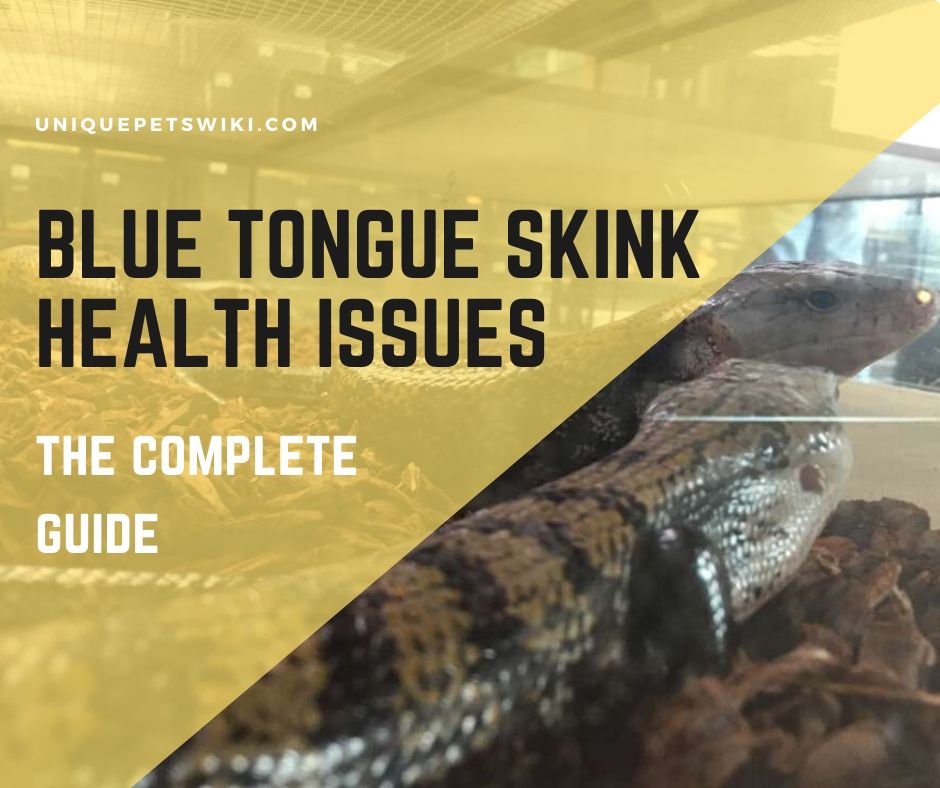
When do we get the t-shirts they look sooo cool 🦎🐍